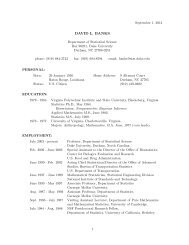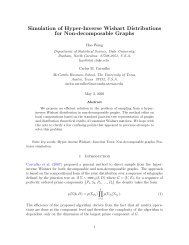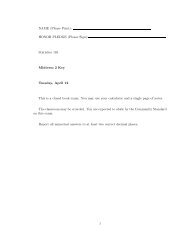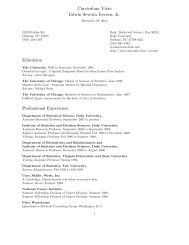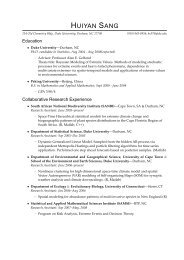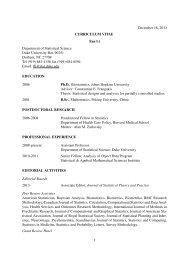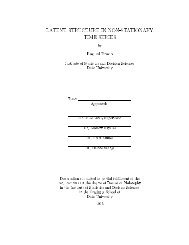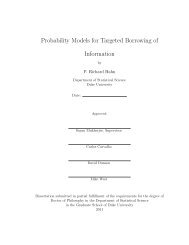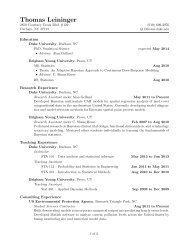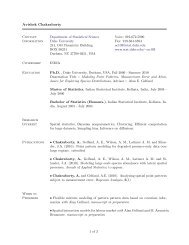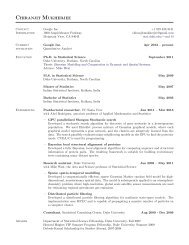Bayesian Dynamic Factor Models - Department of Statistical Science ...
Bayesian Dynamic Factor Models - Department of Statistical Science ...
Bayesian Dynamic Factor Models - Department of Statistical Science ...
You also want an ePaper? Increase the reach of your titles
YUMPU automatically turns print PDFs into web optimized ePapers that Google loves.
in variance and covariance structure as well as underlying time-varying common movements in<br />
multivariate time series.<br />
In the general setting, eqns. (1)–(2) are replaced by<br />
y t = ct + Btf t + εt, εt ∼ N(εt|0, Σt), (3)<br />
f t ∼ N(f t|Ψf t−1, W t) (4)<br />
where εt and es = f s − Ψf s−1 are mutually independent for all t and s. Bt is the time-varying<br />
loadings matrix; any form <strong>of</strong> model may be defined for the time-varying structure, although one<br />
<strong>of</strong> the simplest, and easily most widely useful in practice, is the vector autoregressive (VAR) model<br />
taken here. For each time t, define the p [= mk − k(k + 1)/2] × 1 vector bt by stacking the free<br />
parameters in Bt. Then, we assume that<br />
bt = µ b + Φb(bt−1 − µ b) + η bt, η bt ∼ N(0, V b), (5)<br />
a VAR(1) model with individual AR parameters φbi, in the p × p matrix, Φb = diag(φb1, . . . , φbp).<br />
We assume that Vb is a diagonal matrix and |φi| < 1, which implies that each factor loading follows<br />
a stationary AR(1) model assumed here. We also define the local mean (or time-varying intercept),<br />
ct, following the stationary VAR(1) model:<br />
where Φc = diag(φc1, . . . , φcm), with |φci| < 1.<br />
ct = µ c + Φc(ct−1 − µ c) + η ct, η ct ∼ N(0, V c), (6)<br />
The time-varying variance matrices, Σt = diag(σ 2 1t , . . . , σ2 mt), and W t = diag(w 2 1t , . . . , w2 kt )<br />
are governed by a standard stochastic volatility process with hit = log σ2 it , and λjt = log w2 jt , for<br />
i = 1, . . . , m, j = 1 . . . , k. That is, with ht = (h1t, . . . , hmt) ′ , and λt = (λ1t, . . . , λkt) ′ ,<br />
ht = µ h + Φh(ht−1 − µ h) + η ht, (7)<br />
λt = µ λ + Φλ(λt−1 − µ λ) + η λt, (8)<br />
where (ε ′ t, η ′ bt , η′ ct, η ′ ht , η′ λt ) ∼ N[0, diag(Σ, V b, V c, V h, V λ)], with each <strong>of</strong> the matrices (Φh, Φλ,<br />
V c, V h, V λ) diagonal. This process <strong>of</strong> log variances defines traditional univariate stochastic volatil-<br />
ity models widely used both alone and as components <strong>of</strong> more complex models in financial liter-<br />
ature (Jacquier et al. 1994; Kim et al. 1998; Aguilar and West 2000; Omori et al. 2007; Prado<br />
and West 2010, chap. 7). Note that here not only the series-specific variances but also the factor<br />
variances change over time, which is a quite reasonable assumption for financial multivariate time<br />
4






